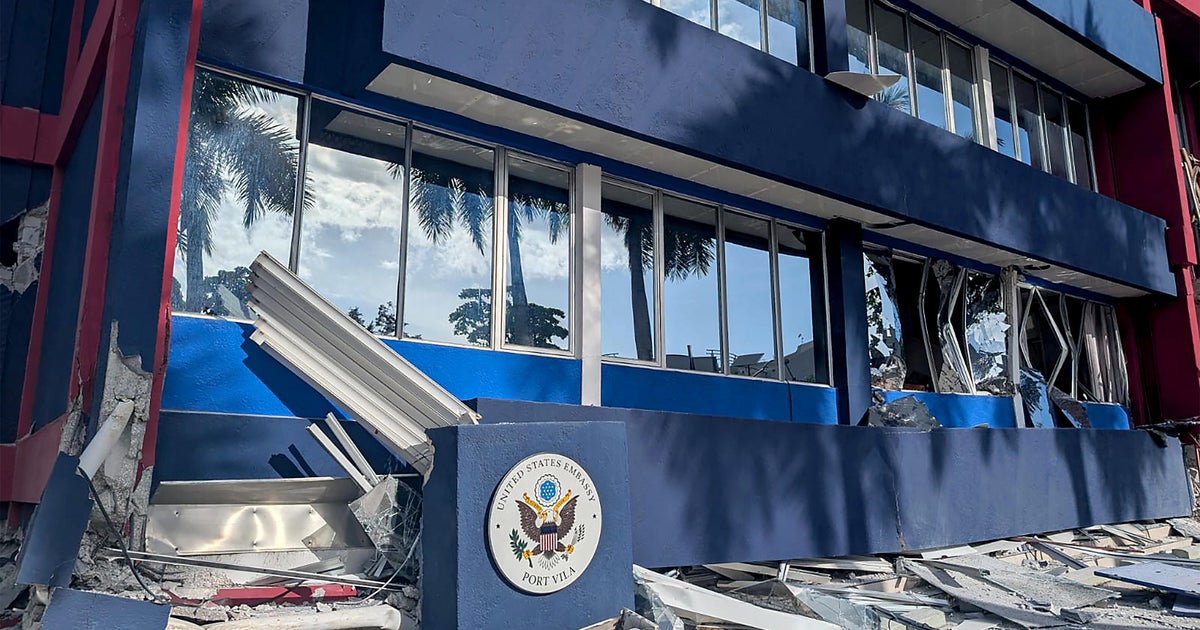Cyclone Biparjoy hits India and Pakistan hard, setting a record, but mass-evacuations save lives
New Delhi — Cyclone Biparjoy, a powerful tropical storm, brought widespread devastation to India's western state of Gujarat after it made landfall Thursday, delivering heavy downpours and strong winds there and along the southwest coast of neighboring Pakistan, but mass evacuations and elaborate preparations in both the countries appeared on Friday to have saved lives.
Two people died and 22 were injured in India, with the deaths occurring before the storm actually hit land, and in Pakistan, not a single death was reported. The low death toll from the cyclone, compared to similar storms that hit the region previously, was seen as a vindication of the mass evacuations. The two countries evacuated more than 180,000 people from their low-lying coastal areas to higher ground before the cyclone arrived.
"Early identification of areas that were likely to be impacted by the cyclone and timely evacuation of people living within 10 km of the coasts are the biggest reasons [for the low number of casualties]," Kamal Dayani, a senior government official in Gujarat, told the Reuters news agency. "Our focus from the beginning was on preventing loss of lives, not just human lives but even animals."
India alone moved more than 100,000 people to safety, while 82,000 people were evacuated in Pakistan. Both countries shut down businesses and transport in coastal areas that fell in the predicted path of the cyclone. Police and paramilitary forces were deployed to keep people indoors.
Biparjoy, which means "disaster" in the Bengali language, made landfall Thursday evening in India's port city of Jakhau as the equivalent of a Category-3 hurricane. While the toll in human lives was relatively low for a major storm, the cyclone still carved a path of destruction as churned inland over the course of the night, dropping a huge amount of rain and packing winds that gusted up to 86 miles per hour.
The cyclonic winds knocked down more than 5,000 electricity poles, cutting power to more than 4,600 villages across Gujarat. But power was restored to about 3,500 of those villages by Friday afternoon.
More than 500 houses were damaged and about 800 trees were uprooted, many of which blocked traffic on at least two state highways for hours Friday morning. Dozens of disaster response teams and hundreds of teams of road and power company personnel were working Friday to reopen roads and restore electricity to about 1,000 households. The full extent of the damage remained unclear.
The cyclone largely spared Karachi, Pakistan's port city of over 20 million people, which was in the forecast path of the storm. But heavy rain and strong winds damaged thatched houses and inundated a few regions along the country's southern coast. Authorities said more heavy rains could be expected in some coastal areas until Saturday.
The storm weakened Friday as it moved further inland over India but was still bringing rain and wind to northern Gujarat and the neighboring state of Rajasthan, along with parts of capital New Delhi.
Biparjoy has become the longest-lasting cyclone ever to form over the Arabian Sea — more than 10 days — overtaking Cyclone Kyarr of 2019, which lasted nine days.
Cyclones, which are known as hurricanes when they form over the North Atlantic and typhoons in the northwest Pacific, are common in the Indian Ocean and Arabian Sea. Scientists say rising ocean surface temperatures, due to climate change, have made cyclones more frequent and more intense.






